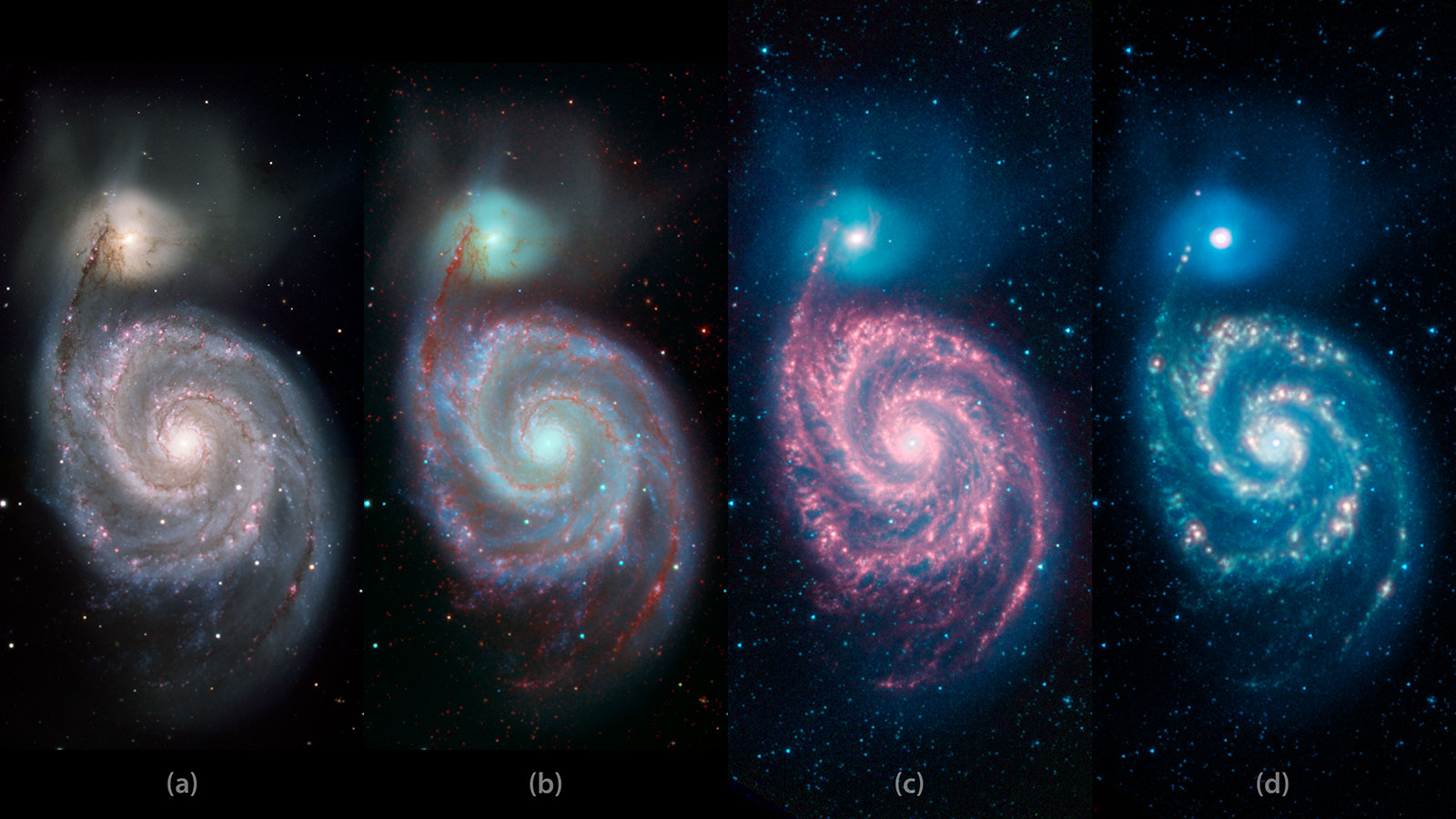
Have you ever wondered why sometimes telescopes capture light in the visible spectrum, and other times in infrared? NASA has released these images of the Whirlpool galaxy, located in the constellation Canes Venatici, which demonstrate the value of collecting data at different wavelengths.
The image shows the same galaxy as seen through different wavelengths of light. On the left, in image (a), you see the Whirlpool in the visible light spectrum, at 0.4 microns (shown in blue) and 0.7 microns (shown in red). This would be how the galaxy would appear to your eye if you observed it through a powerful telescope. In this case, the image was captured with the Kitt Peak National Observatory 2.1-meter (6.8-foot) telescope. The dark swirls you see between the stars are made of dust which blocks a lot of the visible light coming from stars behind it.
In image (b), you see a combination of two data sources. Firstly is the Kitt image (a), and added to this is the data from the Spitzer Telescope which records infrared wavelengths. By combining these two data sources, you can see details that were not visible in the first image. Where there were dark dust swirls before, now you can see more of the detail of the illumination coming from the dust.
Images (c) and (d) show the data that was gathered by Spitzer, at two different ranges of infrared light. Image (c) covers three wavelengths of infrared light: 3.6 microns (shown in blue), 4.5 microns (shown in green), and 8 microns (shown in red). Each blue dot is an individual star, most of which are nearby. The red shows the dust being illuminated by starlight. Image (d) includes an extra wavelength of 24 microns (shown in red) which can highlight areas where the dust is hot. These hot white-red regions are where stars are being formed.
The value of these different images is that they allow astronomers to see features which would otherwise be hidden. The dust clouds, for example, look dark and featureless in the visible light spectrum. But in the infrared spectrum, they glow with light, and certain areas can be picked out which are more hot and active than others.
The images also highlight the difference between different galaxies. If you look at the small galaxy at the top of the image, it looks similar to the Whirlpool galaxy in the visible spectrum. But looking at the infrared images, you can see that it lacks the dust features that the larger galaxy has.



